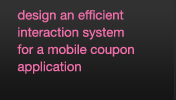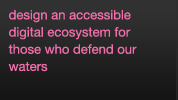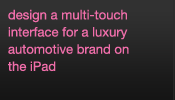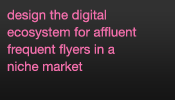By PHIL PATTON
Published: October 8, 2010
LOOK inside the 2011 Ford Fiesta and you will see dashboard controls that have been modeled after the keypad of a cellphone. In some ways, that makes perfect sense: Ford’s market research suggested that young buyers were more attached to their mobile phones than to their means of mobility.
TRYOUTS In Ford’s program to make dashboard designs consistent across all of its models, the shape, operation and placement of controls was tested using simple mockups that could be tried in a wide variety of configurations.
STAGES After testing prototype controls, the design team proposed layouts.
The changes eventually made it to production in the 2011 Ford Edge.
But by the time the new Fiesta arrived in American showrooms this summer, the phone that Ford had chosen as its model looked old-fashioned alongside the latest Apple iPhones and MotorolaDroids — and so did the dashboard controls.
Those outdated buttons are a glaring reminder that mobile electronics evolve much faster than automobiles. In fact, Ford had already recognized the challenge of keeping its vehicles’ controls and instruments up to date and in 2006 began to address the situation.
Ford’s goal in establishing a set of design principles for automotive interfaces that would be consistently applied to all models was to improve what it called the cabin experience. The program was given the internal code name HAL.
The company sought advice from Ideo, the design consultancy known for developing the original Apple computer mouse and shaping interfaces for Palm and other high-tech companies. Ideo’s co-founder, Bill Moggridge, now the director of the Cooper-Hewitt National Design Museum in New York City, was one of the early prophets of what he called interaction design.
The guidelines that resulted from the program, a sort of universal logic for all the cars’ switches and systems, helped shape the dashboard controls in the redesigned Ford Edgeand Explorer. The standards will apply to future Ford models around the world.
“We wanted to get outside the bubble,” said Jennifer Brace, a user interface design engineer at Ford. “We wanted an instruction-by-instruction DNA for vehicle interiors.”
Ideo said that its methods were built on research and making prototypes for fast feedback. Its work began with interviews of a broad cross section of people — not just seasoned drivers, but also airplane pilots and A.T.M. users. This is called ethnographic research; similar work from Ideo helped in the development of the SmartGauge in the Ford FusionHybrid, a display of green leaves that coaches drivers to drive more efficiently.
“We found we learned the most not from the average driver, but from the extreme cases,” said Iain Roberts, head of the interface group in Ideo’s Chicago office, who led the team working with Ford. “We want to get to the ends of the bell curve.”
Stepping beyond the focus groups and drivers that Ford had traditionally used for research, Ideo went to raw novices. Some teenagers, Ms. Brace said, had no idea what the tachometer was or why it was there. Getting rid of the tachometer had not been seriously considered by Ford.
Ideo also went to extreme experts, Mr. Roberts said. One was a member of an Internet forum of audio tinkerers pioneering the use of the MP3 format music in cars. These users had addressed many of the interface issues that concerned Ford, developing their own ways to combine audio, video and other entertainment streams.
“About six users represented 80 percent of the problems,” Mr. Roberts said. “They were early adopters of technology who put 15-inch screens on the console and huge disk drives in the trunk.”
New ideas were tested on drivers. Ideo teams quickly mocked up ideas, often using little more than sticky notes, cardboard and modeling clay.
For this project, a PlayStation 2 game console and a dashboard from an older Ford Edge were pressed into service, Ms. Brace said. For a driving simulator, the group used a projector showing the video game Gran Turismo 3. The controls — pedals and steering wheel — were worked up from controllers intended for racing video games.
The rules for design drawn from the research were so fundamental as to border on cliché: Be attentive. Be approachable. Be clear. Be connected.
But from these arose useful specifics: Just because you can doesn’t mean you should.
“When you have an eight-inch touch screen, you think of all the things you can do,” Mr. Roberts said. “But then you remember that people have to drive while doing it.”
Drawing cautionary lessons from the needlessly complex interfaces of competitors’ vehicles, the development team created guiding statements: To disappoint is worse than never making the promise. And: Unmet expectations negatively impact people’s perceptions.
Also important, according to Ms. Brace, was the idea that tried and true does exist. “Some conventions are worth respecting and don’t need to be reinvented,” she said.
For example, rather than develop a proprietary controller like the multifunction knob ofBMW’s iDrive, Ford chose familiar input devices similar to those of TV remote controls and iPods.
One is the five-point controller — four directional arrows with a central button — on the steering wheel. Used on many electronic gadgets, it had roots in the points of the compass. Five-point controllers on the steering wheel are easily operated with the thumb, which lets drivers keep their eyes on the road.
A central eight-inch screen is organized around four corners and four colors: yellow-orange for the phone, green for navigation, blue for climate control and red for entertainment. There are, mercifully, large knobs for volume and fan speed.
The design that grew from the team’s work was simple. Information and controls for the car are on a screen to the left of the speedometer, while those for the driver (including the climate control, audio system and navigation unit) are on the right.
The system is intended to be flexible for the designers. The Mustang version could look sportier, while the Lincoln version, offered on the 2011 MKX, included sliders, a presumably more elegant and upmarket mode of touch control.
Part of the idea of the DNA is to make customers loyal to Ford. Given its partnerships withSony and Microsoft, it is no surprise that Ford does not offer dedicated connections for Apple’s iPhone or iPod.
While Ford has received more attention for the voice recognition features of Sync, the automotive software developed jointly with Microsoft, its comprehensive redesign of the tactile controls is likely to have at least as much importance for drivers. The touch screen and the steering wheel buttons are now plausible alternatives to the voice controls.













